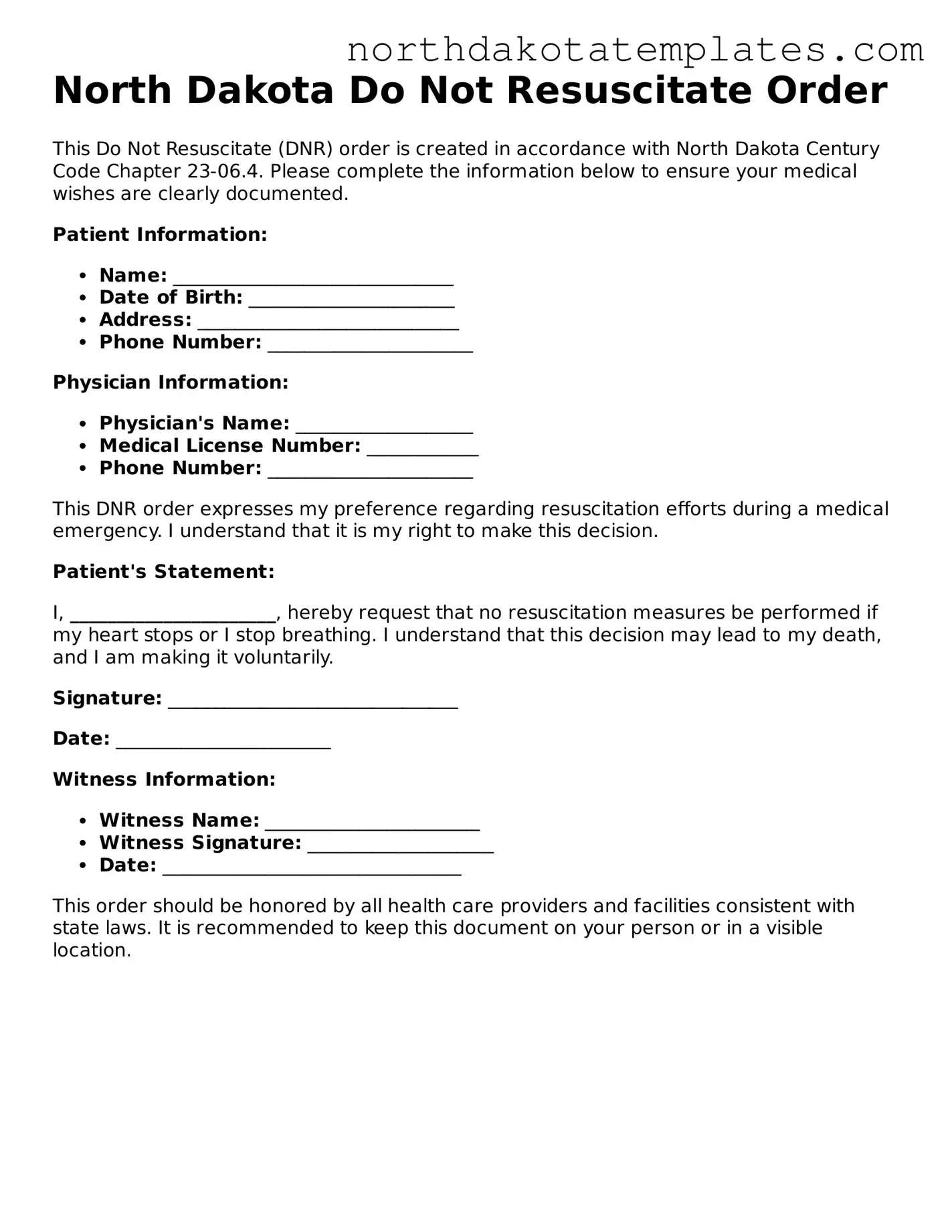Filling out the North Dakota Do Not Resuscitate (DNR) Order form requires careful attention to detail. One common mistake is failing to provide accurate personal information. The form must include the patient's full name, date of birth, and other identifying details. Incomplete or incorrect information can lead to confusion during a medical emergency.
Another frequent error is not having the form signed by a qualified physician. The DNR Order must be signed by a licensed healthcare provider to be valid. Without this signature, medical personnel may not recognize the directive, leading to unwanted resuscitation efforts.
People often overlook the importance of discussing their wishes with family members. A DNR Order should not be a surprise to loved ones. Clear communication can prevent misunderstandings and ensure that everyone is on the same page regarding the patient's wishes.
Additionally, individuals sometimes fail to date the form. The effective date of the DNR Order is crucial. Without a date, it may be unclear when the directive takes effect, potentially complicating decisions made by healthcare providers.
Another mistake involves not reviewing the form regularly. Life circumstances can change, and so can a person's wishes regarding resuscitation. It is essential to update the DNR Order as needed to reflect current preferences.
People may also neglect to provide copies of the DNR Order to relevant parties. It is important to share the completed form with healthcare providers, family members, and anyone involved in the patient's care. This ensures that the directive is accessible when needed.
Some individuals do not fully understand the implications of a DNR Order. It is vital to comprehend that this document specifically addresses resuscitation efforts and does not dictate other aspects of medical care. Misunderstanding this can lead to complications in treatment decisions.
Another common error is using outdated forms. The North Dakota DNR Order may be updated periodically. Using an old version of the form can lead to legal issues or confusion among healthcare providers.
Additionally, people sometimes fail to keep the DNR Order in an easily accessible location. In an emergency, time is of the essence. Keeping the form in a visible place, such as on the refrigerator or in a medical binder, can help ensure it is found quickly.
Finally, individuals may not consider the need for witnesses. Depending on the specific requirements in North Dakota, having witnesses can be necessary to validate the DNR Order. Failing to include witnesses can render the document ineffective.
